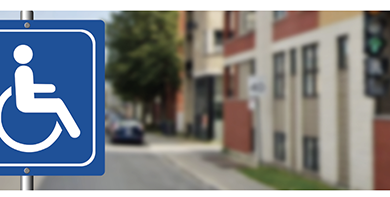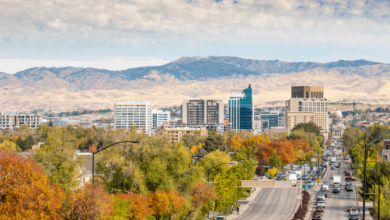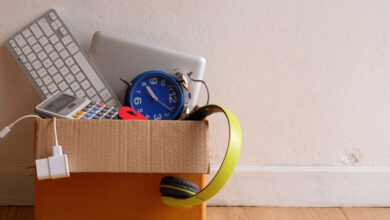Emergency Preparedness Checklist [Download] | ApartmentGuide.com

Preparing for emergencies can be the difference between surviving a disaster and being vulnerable in a long-term crisis. From power outages to hurricanes, emergencies strike every day, often without warning. By the time they do, it’s too late to start planning.
Fortunately, there are many things you can do now to prepare yourself and your family for a future emergency. But it can be a complex process and it’s easy to forget something. That’s why it’s a good idea to start with an emergency preparedness checklist.
These recommendations will help you create your own family emergency plan, including a checklist of steps to take and supplies to pack in an emergency supplies kit.
Download our printable emergency preparedness checklist
This printable emergency preparedness checklist can help you take the necessary steps to create an emergency plan to protect yourself and your family.

1. Understand the risks for your region
Begin to prepare for emergencies specific to your location by assessing the risks of your particular location. While there are basic requirements for preparedness, each type of natural disaster also requires its own specialized preparations.
For example, an ice storm can cause an extended power outage, so you may want to install a portable generator. During an earthquake or tornado, you will need to know how to find the safest place to shelter. (In either case, stay away from windows, near the center of an interior room.)
And different regions are prone to different disasters: Texas has been hit by frost, hurricanes, floods, hail and fires. In California, earthquakes and fires are common threats. Oklahoma sits in a “tornado alley” and is often hit by ice storms.
Check with relief agencies in your area for information on community emergency alerts, area evacuation routes, and special assistance options for seniors and people with disabilities. Find out about your workplace and your children’s school or daycare to find out the emergency plan for each establishment.
Monitor weather and fire reports via NOAA Weather Radio. Download a reliable weather app and sign up for emergency alerts. Wireless emergency alerts sent to your smartphone will notify you with a unique tone and vibration, followed by short text messages explaining the type of alert and recommended action.
2. Write down emergency phone numbers
Important phone numbers should be available in multiple locations and formats. It’s a good idea to display them on the refrigerator – with your home number and address for reference – as well as near any landline phones. Also program these numbers into the cell phones of each member of the household.
Choose a primary emergency contact and at least one secondary contact to call if your family is separated. We should live out of state and we should live locally. Tell your family and loved ones who to call in every possible type of emergency. Remember that sometimes during a crisis it is easier to access out-of-state numbers than local numbers.
It’s also a good idea to know what emergency management and response organizations you might be dealing with in the aftermath of a disaster, such as FEMA or the American Red Cross. Also publish these numbers and save them to your contacts.
Program emergency service numbers into your phone and place them at the top of your list so you can find them immediately. Tip: Most phones list contacts alphabetically, so you can list emergency contacts with “AA” or number 1. Then write them down on a small card to put in your wallet, in case you need to. wouldn’t be in the list you posted, your phone isn’t charging or your Wi-Fi is down.
Here are some numbers you should include:
- Fire / paramedics
- Police
- Local relief agencies
- Zone utilities
- Job
- School
- Child care
- Relatives
- Poison control
3. Identify escape routes
Draw the floor plan of your home and determine the safest escape routes for a quick getaway in every type of emergency. Escape routes should also be convenient for pets, if you have any.
Post evacuation route plans in a central location in your home, preferably next to important phone numbers, and in every bedroom. Also remember to load these instructions into your smartphone.
It is important to know when to get out and when to seek shelter where you are. Fires can occur in any climate and are the most common type of emergency requiring escape or escape routes; if you are indoors during a tornado or earthquake, you better stay put.
Strategically store any gear that could help you escape faster, like foldable ladders in upstairs rooms or window breakers for shatter-proof glass. If your windows or doors have security bars, make sure they have emergency triggers so you can get out quickly if you need to.
And if you have pets, make the pet carriers easily accessible so you can load them quickly. (Raising cats is even more difficult in a crisis.)
4. Locate emergency meeting places
Designate two different places where family members can meet to meet up after leaving your home. You must be directly outside the house in case of fire. Identify a location that is a safe distance from the house, such as a neighbor’s house, nearby mailbox, or stop sign.
The other designated meeting place must be outside the neighborhood in the event of an evacuation. In the event of a major disaster requiring evacuation, connect with local media and be on the lookout for alerts on where to find help in emergency shelters.
You can also designate an out-of-state hangout if it’s common for your entire area to be evacuated, such as during hurricane season. Make sure your family members have these addresses and phone numbers among their emergency contacts.
Include all locations in your escape route plan, clearly marked on a map. Post the meeting plan next to important phone numbers and escape routes.
5. Practice escaping, responding and meeting family
Discuss with household members what to do during a fire, storm, earthquake, etc. At least two people in your home should know how to shut down utilities and respond to power outages. At least two of them should know first aid procedures for treating bodily injuries.
Make sure your household takes the time to review and practice escape routes so your whole family is prepared in an emergency. Organize periodic drills like schools, businesses, and other public facilities do, to make sure everyone can exit the building. If you can, have your family meet at designated local emergency meeting places.
6. Bring an emergency supplies kit
Have a go-bag or preparation kit loan that includes family records and other important documents (stored in a safe portable container), as well as survival essentials you might need in an emergency. Refer to the Emergency Preparedness Checklist below for supplies to include in your emergency kit.
“Go bag” supplies
“Take-out bags” are emergency kits that contain the essentials to keep people safe in a crisis. Most of the items listed will apply at all levels. However, you can decide whether you need to pack other essentials that meet special needs – for example, specialized medical supplies, prescription drugs, spare glasses, personal hygiene items, or food for the baby. pets.
For more information, see the official US government emergency preparedness website, ready.gov.
Essential survival supplies
- First aid kit
- Emergency blanket
- Battery powered radio
- Additional batteries
- Tape
- Flash light
- Fire extinguisher
- Pocket knife
- Sleeping bag / tent
- Drink water
- Protein bars
- Canned food
- Manual can opener
Additional supplies
- Cellphone
- Cell phone charger
- Credit card
- Birth certificates
- Garbage bags
- Insurance conditions
- Travelers checks
- Contact information
- Sturdy shoes
- Sleeping bags
- Mask
- Rain gear, if applicable
Tool Kit Supplies
- Pliers
- Pocket knife
- First aid kit
- Tape
- Can opener
- Fire extinguisher
- Battery powered radio
- Flash light
- Additional batteries]
Personal hygiene and health products
- Hand sanitizer
- Toilet paper
- Prescription drugs
- Feminine supplies
- Additional change of clothes
- Washcloths
- Household bleach
- Clean wipes or wipes
Food and beverage supplies
Plan for a 3-day supply of non-perishable foods in an airtight container, plus a supply of water. Keep a gallon of water per day for each person for several days, to use for drinking and sanitation. Pack as lightly as possible without leaving out the essentials. Foods like protein bars save space and gain weight.
- Drink water
- Peanut Butter
- Granola bars
- Vacuum packed meats
- Canned foods
- Crackers
- Protein bars
Stay safe with our emergency preparedness checklist
Creating an emergency plan and putting together a kit of supplies for your family can be a complicated process. But it’s a endeavor worth every moment of the effort as your preparations keep your family safe during a disaster.




